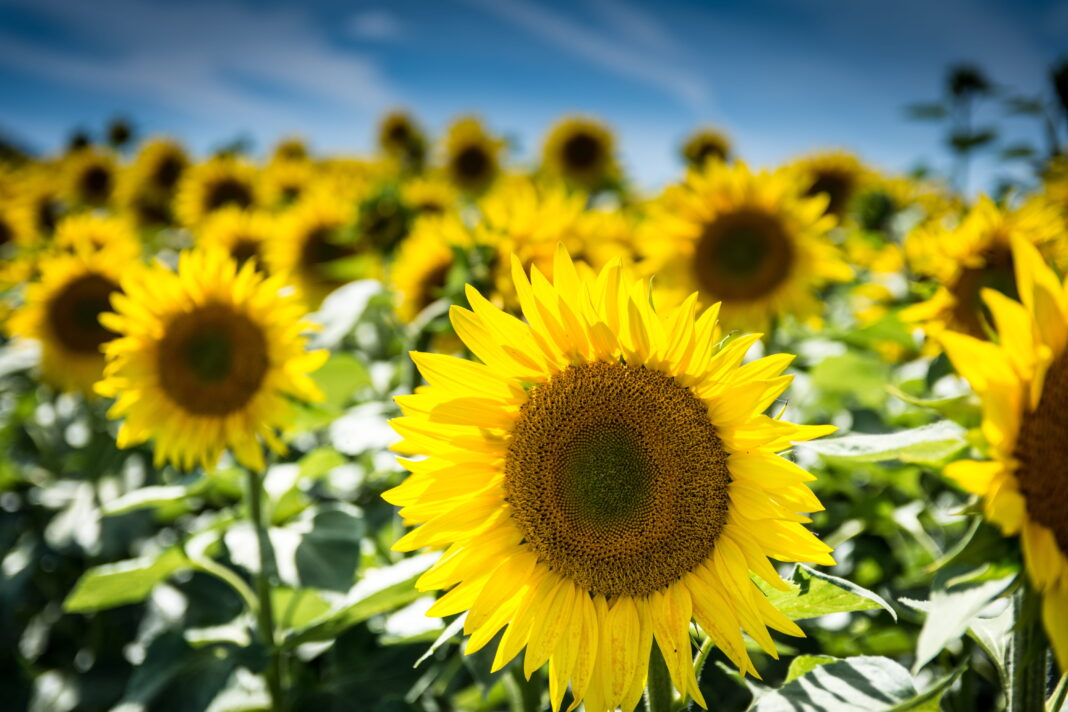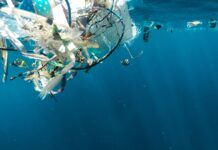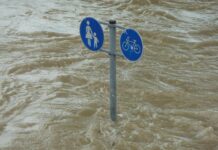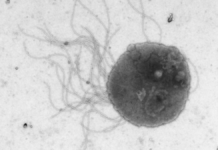Since the development of nuclear power, we face the delicate balance between its smart usage and the threat it poses not only to humanity, but to the biosphere. The whole planet as we know it—with its uniqueness in the vast known universe capable of bearing life—could be at risk because of its mismanagement.
Nuclear waste is a harsh contaminant. Radionuclides such as uranium or radioactive isotopes of cesium (137Cs) or strontium (90Sr) in the soil and water can be absorbed by plants ending up in humans and other animals across the food chain, damaging cells and tissue irreversibly. In humans, radionuclides may cause a variety of health issues, such as bone cancer or leukemia.
How do we remove radioactive spills from the soil and the water after a nuclear disaster? Many technologies developed since the Chernobyl accident in 1986 use state-of-the-art machines and chemicals; however, some companies and scientists have been turning their attention to our oldest companions and helpers: plants.
Plants are the earth’s natural cleaners. From recycling waste carbon dioxide to absorbing heavy metals from the soil, many of them have been employed in research to understand their capability to help us repair some of the harm we have been causing to the environment.
Scientists have been investigating species of plants not considered for consumption to help remove the radionuclides released after a nuclear accident. This process is called phytoremediation.
Sunflowers: beauty that deals with danger
The use of phytoremediators began decades ago. However, out of thousands of plants under consideration, the sunflower cultivar Helianthus annuus L has been declared a clear winner. In 1986, plant biologist Ilya Rasking and his research group at Rutgers University found that hydroponic cultivation of this species of sunflower quickly accumulated heavy metals and radionuclides. They conducted experiments with water contaminated with uranium in Ohio, and reported that, after 24 hours, the uranium concentration in the water declined to 94%.
These magnificent, gorgeous flowers have interesting characteristics that facilitate their cleaning feature. They grow fast and strong almost everywhere. They also accumulate radioactive elements at a much higher rate than other plants. After the flowers have finished their job, they can be properly harvested and disposed of as nuclear waste.
In 1994, a multinational effort successfully employed sunflowers to clean up both 137Cs and strontium 90Sr out of the water in Chernobyl, Ukraine. Large fields of sunflowers were planted in the affected area, as close as one kilometer from the damaged nuclear reactor.
According to the company Phytotech, phytoremediation reduced the cleanup costs by ten percent compared with other methods such as chemical treatments.
The sunflower species Helianthus annuus L has also been seen to remove other toxic metals, such as Cu2+, Cd2+, Ni2+, Pb2+, and Zn2+, from aqueous solutions effectively.
More green cleaners to the rescue
Sunflowers were effective in the water in experiments and in Chernobyl, but not so much in the soil.
Researchers from Purdue University in the U.S. investigated other phytoremediators such as mustard and tobacco. Botany professor Mary Alice Webb conducted experiments with tobacco seedlings to absorb calcium. Surprisingly, her experiments showed that tobacco is also capable of taking up the isotope 90Sr, realizing that tobacco can also help clean up the soil from this nuclear contaminant. In this case, what is happening is that 90Sr mimics the calcium managing its way up to the plant.
Although many experiments have shown success, field studies still need to be carried out to confirm some sunflowers and other plants as reliable and efficient phytoremediators following nuclear accidents. After the Fukushima disaster in 2011, Japanese engineers planted large fields of sunflowers and other phytoremediators; however, this time, their performance was not as good as expected.
Some researchers believe that differences between the Fukushima and Chernobyl incidents are to blame for the inefficient use of the sunflowers as cleaners. It could be that they were planted right after the disaster in Fukushima, while they were planted years after the accident in Chernobyl, allowing the chemistry of soil and water to change. The other issue was probably the genetic differences between the sunflower genotypes used in Ukraine and Japan.
Other in-lab studies have shown the ability of sunflowers Helianthus annuus L. to efficiently absorb 137Cs and 60Co. Indian mustard has also resulted in a high biomass hyperaccumulator of heavy metals and radionuclides.
Although many novel technologies have been developed to clean up radioactive material spreading in the air, soil, and water after a nuclear disaster—including rovers to limit workers’ exposure to radiation—further strategies and low-cost methods are still under investigation.
Whenever you see a field of sunflowers in Ukraine, think of them not only for their beauty, oil production, and peace symbolism, but also for their cooperation in cleaning the environment.
References
- Achmad, C. A. A., & Hadiyanto. (2018). Root Uptake and Distribution of Radionuclides 134Cs and 60Co in Sunflower Plants (Helianthus annuus. L). E3S Web of Conferences, 73, 05027. https://doi.org/10.1051/e3sconf/20187305027
- Cooney, C. M. (1996). News: Sunflowers remove radionuclides from water in ongoing phytoremediation field tests. Environmental Science & Technology, 30(5), 194A. https://doi.org/10.1021/es962219c
- Bloom of the Week – Phytoremediation with Sunflower. (2013). The Blackman Lab. Retrieved March 22, 2022, from https://nature.berkeley.edu/blackmanlab/Blackman_Lab/Lab_News/Entries/2013/2/18_Bloom_of_the_Week_-_Phytoremediation_with_Sunflower.html
- Purdue researchers prod plants to clean up pollution. (1997, April). Prude News. Retrieved March 22, 2022, from https://www.purdue.edu/uns/html4ever/1997/9704.Goldsbrough.phyto.html





